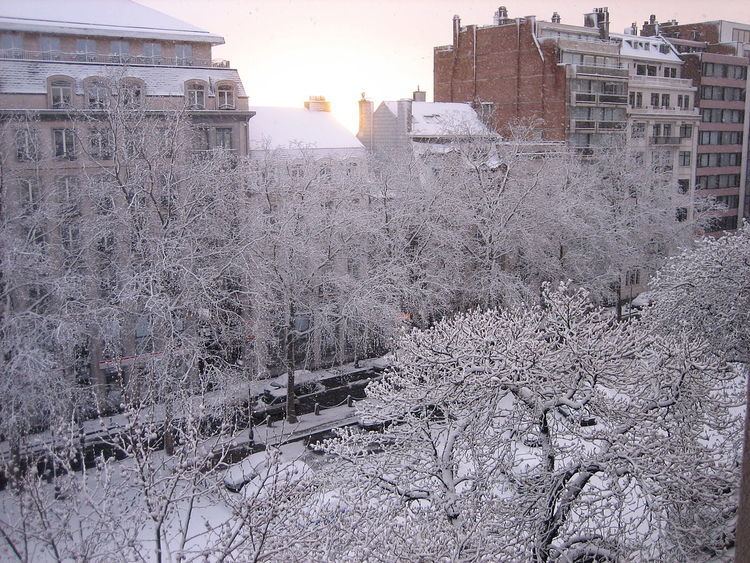 | ||
Avenue Louise (French) or Louizalaan (Dutch) is a major thoroughfare in Brussels. It runs southeast from Place Louise to the Bois de la Cambre, covering a distance of 2.7 kilometers (1.7 mi).
Contents
- Map of Avenue Louise Bruxelles Belgium
- History
- Gestapo headquarters
- Embassies
- Landmarks
- The Louise bottleneck
- References
Map of Avenue Louise, Bruxelles, Belgium
Avenue Louise is one of the most prestigious and expensive streets in Brussels.
History
The construction of Avenue Louise was commissioned in 1847 as a monumental avenue bordered by chestnut trees that would allow easy access to the popular recreational area of the Bois de la Cambre. It was also to be the first Haussmann-esque artery of the city. The name was chosen in honor of King Leopold II's eldest daughter, Princess Louise.
However, fierce resistance to the project was put up by the town of Ixelles - then, as now, a separate commune (local authority) from the City of Brussels - through whose territory the avenue was to run. After years of fruitless negotiations, Brussels finally annexed the narrow band of land needed for the avenue plus the Bois de la Cambre itself in 1864. That decision accounts for the unusual shape of today's City of Brussels and for Ixelles being split in two separate parts.
Gestapo headquarters
During World War II, following the German invasion of Belgium, Brussels was occupied by the German military. The Nazi security organisation, the Sicherheitspolizei-Sicherheitsdienst, (Sipo-SD) of which the Gestapo was a part, set up their Brussels headquarters on Avenue Louise.
They occupied numbers 347, 418, 453 and 510; initially their headquarters were in number 453, the "Résidence Belvédère".
On 20 January 1943, Jean de Sélys Longchamps, a Belgian (born in Brussels) who had become a fighter pilot in the Royal Air Force, mounted a solo attack on the headquarters at number 453. Benefiting from the wide avenues, and the large height of the apartment block relative to the neighbouring buildings, he flew his Hawker Typhoon at a low altitude straight towards the building, firing the plane's 20mm cannons, before returning to England.
Following this attack, the SD moved their headquarters to number 347 Avenue Louise. The cellars at this address were used to detain and interrogate captured members of the Belgian resistance. The torture which took place here brought the name of Avenue Louise considerable infamy at the time.
A monument to Baron de Selys Longchamps now stands in front of 453 Avenue Louise.
Embassies
Landmarks
Today, Avenue Louise is home to many upmarket shops, restaurants and offices. From north to south, notable landmarks include:
Tramway line 94 runs the entire length of the avenue, all on segregated track except in the short "goulet Louise" section.
The "Louise bottleneck"
The 250-meter (830 ft)- long part of Avenue Louise between the Louise and Stephanie squares is called "le goulet Louise" ("the Louise bottleneck"). With two tramway lines and thousands of cars sharing this narrow segment of the avenue, large traffic jams occur here during rush hours. The problem was already obvious in the early 1980s, so a tram tunnel under the bottleneck was built along with the metro station on Louise Square. However, construction was abandoned toward its end due to protests of local businesses fearing losses if patrons were to be diverted through a tunnel.
The nearly-completed, vast tramway tunnel under the Louise bottleneck remains unused as of 2009. Various solutions to the traffic problem have been considered. One proposes pedestrianizing the whole segment, with trams running on the surface and only delivery vehicles authorized at certain hours. Another, much more costly, involves finishing the tunnel and diverting all trams underground.
